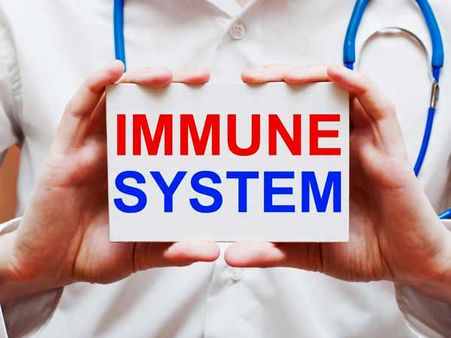Just In
- 2 hrs ago

- 6 hrs ago

- 6 hrs ago

- 12 hrs ago

Don't Miss
- Finance
 Stock Market Live Updates: Nifty Forecast To Lose Each Week; Infosys's ADR Dips 2.6% Over Night
Stock Market Live Updates: Nifty Forecast To Lose Each Week; Infosys's ADR Dips 2.6% Over Night - Movies
 Bade Miyan Chote Miyan Box Office Day 9 Prediction: Akshay’s Film To Cross 51Cr Ahead Of 2nd Weekend
Bade Miyan Chote Miyan Box Office Day 9 Prediction: Akshay’s Film To Cross 51Cr Ahead Of 2nd Weekend - Sports
 LSG vs CSK IPL 2024: Four Batters Who Can Score Most Runs in Match 34
LSG vs CSK IPL 2024: Four Batters Who Can Score Most Runs in Match 34 - News
 12 Jurors Picked For Donald Trump’s Hush Money Trial, Alternate Selection Continues
12 Jurors Picked For Donald Trump’s Hush Money Trial, Alternate Selection Continues - Automobiles
 Aprilia RS 457 Accessories: A Detailed Look At The Prices
Aprilia RS 457 Accessories: A Detailed Look At The Prices - Education
 Karnataka SSLC Result 2024 Soon, Know How to Check Through Website, SMS and Digilocker
Karnataka SSLC Result 2024 Soon, Know How to Check Through Website, SMS and Digilocker - Technology
 Nothing Ear, Ear a With ANC, Up to 42.5 Hours of Battery Launched; Check Price and Availability
Nothing Ear, Ear a With ANC, Up to 42.5 Hours of Battery Launched; Check Price and Availability - Travel
Telangana's Waterfall: A Serene Escape Into Nature's Marvels
Top 10 Reasons Why Diabetic Patients Must Switch Over To Low GI Foods
Diabetic patients must include certain kinds of food for steady weight loss. This article deals with what kinds of diet they must adopt and the reasons why switching over to it is a good decision.
Diabetic patients are at the risk of putting on weight due to their health conditions. It is also a viable option for them to follow the normal diet pattern that is followed by the others, as they must have a strict control over their diet.
The ideal weight loss diet for a diabetic patient is a low GI diet. A balanced low glycaemic index (GI) diet is the healthiest option for weight loss for a diabetic patient. The most important part is that a low GI diet will help manage the blood glucose levels in the body.
GI or glycaemic index is a measurement of the carbohydrates in food and the way it affects the blood glucose levels. Apart from that, it also shows the impact of a food on blood glucose levels.
The energy required for the body comes from a sugar known as glucose. Foods with low GI index are converted very slowly to glucose, whereas foods with high GI are converted rapidly to glucose.
When a diabetic patient consumes high GI foods, high levels of glucose reaches the blood stream. Too much of glucose at once is harmful for the body, so in order to compensate this, the body releases high amounts of insulin that transfers the glucose to fat stores.
If this happens regularly, then it can lead to weight gain and make the cells insulin resistant. So, by opting for a low GI diet, this damaging process can be prevented.
Here are top 10 reasons why you must switch over to low GI foods.

1. Heart Friendly:
Intake of low GI foods increases the amount of good HDL cholesterol in the blood stream, thus promoting heart health.

2. Averts Risk Of Alzheimer's Disease:
Large amounts of homocysteine increases the risk of Alzheimer's disease later on in life. But bringing in changes to the diet like replacing white rice with whole grains can reduce the amount of homocysteine rapidly.

3. Wards Off The Risk Of Breast Cancer:
High GI foods trigger the release of huge amounts of insulin and facilitate the growth of breast cancer cells. It is always ideal to opt for a low GI food.

4. Promotes Weight Loss:
Food which has a low GI increases the amount of fibre in the body. This boosts weight loss and gives you a feeling of fullness for longer hours. This prevents unhealthy food cravings.

5. Skin Benefits:
High GI foods trigger skin inflammation and also alter the structure of collagen and elastin. By switching over to low GI foods, you can cut off the increased sugar intake and also this can further protect your skin.

6. Wards of Androgens:
High insulin levels in the body promote high levels of androgen in the body. This leads to sebum production and leads to skin breakouts. Thus, low GI foods avoid this as well.

7. Reduces The Risk Of Diabetes:
Opting for a low GI diet will reduce the risk of diabetes in healthy people. It will also help diabetic patients to manage their blood glucose levels more effectively.

8. Averts The Risk Of Stroke:
According to a study, women who replace one serving of refined carbohydrates with whole grains showed a reduction in the risk of stroke by almost 40%. Hence, switching over to low GI foods reduces the risk of stroke.

9. Boosts The Immune System:
Sugary food affects the immune system of the body. Low GI foods aid in maintaining the healthy functioning of the immune system and ward off problems like cold, fever and flu.

10. Increases The Endurance:
Opting for a low GI food boosts the stamina and endurance and it also aids people who exercise regularly.
-
 healthYou Can Rely On Simple Indian Superfoods From Local Market To Counter Diabetes, What You Must Include In Diet!
healthYou Can Rely On Simple Indian Superfoods From Local Market To Counter Diabetes, What You Must Include In Diet! -
 healthBudget-friendly Nutrition: How to Maintain a Healthy Diet without Breaking the Bank?
healthBudget-friendly Nutrition: How to Maintain a Healthy Diet without Breaking the Bank? -
 nutritionIndian Vegetables That Are A Must Add To Your Diet; Recipes And Possible Side Effects
nutritionIndian Vegetables That Are A Must Add To Your Diet; Recipes And Possible Side Effects -
 wellnessFather's Day 2021: Eating Changes To Make At Home For Your Older Father (Over 50)
wellnessFather's Day 2021: Eating Changes To Make At Home For Your Older Father (Over 50) -
 wellnessFather’s Day 2022: Healthy Indian Diet For Your Father
wellnessFather’s Day 2022: Healthy Indian Diet For Your Father -
 wellnessCoronavirus: How To Maintain A Healthy Diet During Self-Quarantine
wellnessCoronavirus: How To Maintain A Healthy Diet During Self-Quarantine -
 wellness8 Healthy Foods You Should Have In Your Fridge
wellness8 Healthy Foods You Should Have In Your Fridge -
 diet fitnessWhat Does The Natural Human Diet Comprise Of
diet fitnessWhat Does The Natural Human Diet Comprise Of -
 diet fitness9 Khichdis That Aid Detoxification
diet fitness9 Khichdis That Aid Detoxification -
 nutrition10 Healthy Cooking Substitutes For Olive Oil
nutrition10 Healthy Cooking Substitutes For Olive Oil -
 diet fitnessHow To Detox Your Diet By Eating More
diet fitnessHow To Detox Your Diet By Eating More -
 wellness8 Tips To Train Your Brain Into Avoiding Junk Food!
wellness8 Tips To Train Your Brain Into Avoiding Junk Food!


 Click it and Unblock the Notifications
Click it and Unblock the Notifications



